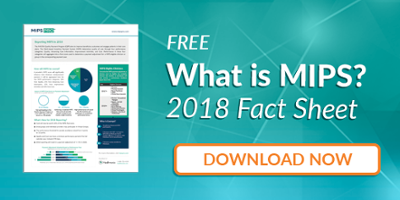
Depending on your performance and your desire to maximize your reimbursement in 2019 (who doesn’t want more revenue?), there are a number of options available in final submission of your MIPS data to CMS. All of these choices can seem overwhelming, but Healthmonix is here to help! Read on to find out what choices you'll face and how to make the best ones for your practice.
What Choices Will I Have to Make Before Submission?
 Identifying Your Best Quality Measures
Identifying Your Best Quality Measures
RELATED: A Brief Overview of Quality Measures
Although it may seem oxymoronic, your best quality measures may not necessarily be the measures that you perform best at. Instead, consider which measures you do well at compared to your peers. This is a little tricky, because you may have selected some measures for which benchmarks are not yet available.
You have a couple of choices here. You can submit all of your measures; if you do this, CMS will find your best six (including your best outcome/high priority measure) and give you the best score possible. However, be aware that all measures you submit to CMS can be published on Physician Compare for public access. So if you have some low performers, you may not want to include those.
 Determining the Period For Which to Report Quality Measures
Determining the Period For Which to Report Quality Measures
Your second choice is determining the period for which you want to report quality measures. In this 2017 transition year, you have the option to report any period of 90 days or greater. So you may have a period (e.g. towards the end of the year) where your performance was above your overall yearly performance. If that’s the case, choosing that period can result in a higher score, and thus a higher incentive percent in 2019. Our MIPSPRO system provides you with tools to help identify the best periods to report. (Note that you need to report all quality measures for the same period.)
 Selecting Group and/or Individual Reporting If You Are in a Group
Selecting Group and/or Individual Reporting If You Are in a Group
MIPS allows you to report both group and individual data, and to receive credit for the option which most advantageously impacts your 2019 incentive. In most cases, submitting both scores can be helpful. Again, one reason to decide against this is if one or more of your providers have low scores. Additionally, if you have a large number of providers that are not MIPS-eligible, you may want to just report individually for those that are eligible―in which case you don’t need to report data for the entire group.
There is a lot of nuance involved in reporting MIPS data in order to maximize reimbursements in 2019. With MIPSPRO, you don’t need to make any decisions until you are done gathering your data and are ready for final submission. MIPSPRO users are better equipped to choose the most advantageous reporting approach for their particular situation because they can base these choices on actual data as opposed to estimates, and because they are able to see estimated MIPS Scores based on each option, before final submission. Plus, our fabulous support staff will help guide you through the submission process so you can maximize your chances of reporting success.


